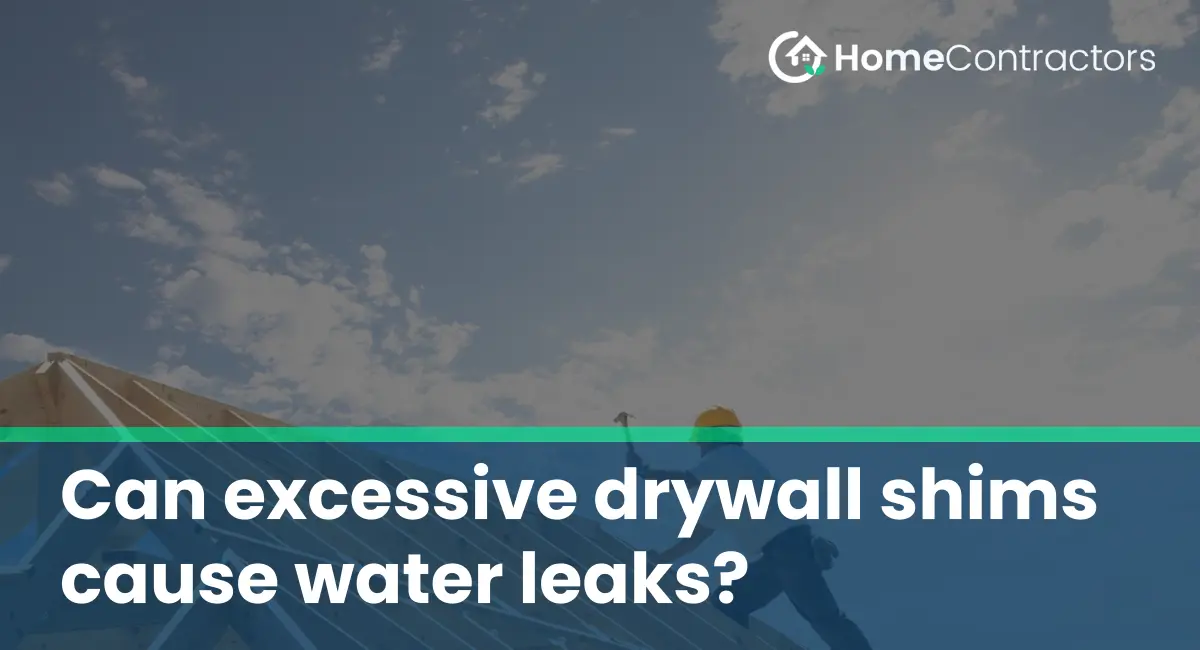Drywall shims are commonly used in construction to level uneven surfaces before installing drywall panels. These thin strips of wood or plastic are placed between the framing and the drywall to ensure a smooth and level finish. While drywall shims are an essential tool for achieving a professional-looking wall, their excessive use can potentially lead to water leaks, which can cause significant damage to a building. In this article, we will explore the relationship between excessive drywall shims and water leaks, discussing the potential risks and preventive measures to ensure a leak-free structure.
Understanding Drywall Shims:
Before we delve into the possible connection between excessive drywall shims and water leaks, it is important to understand what drywall shims are and how they are used. Drywall shims are typically made from wood or plastic materials and are available in various thicknesses. They are used to level or plumb walls, ensuring that the finished surface is flat and even. Shims are placed behind the drywall panels and are commonly used around door or window openings, corners, and irregular surfaces.
The Role of Shims in Water Leak Prevention:
Proper installation of drywall shims plays a crucial role in preventing water leaks. Shims help to create a stable and even surface for the drywall installation, which is essential to maintaining the integrity of the building envelope. By ensuring that the drywall is securely attached and flush with the framing, shims help prevent moisture from seeping behind the walls and causing water damage. Therefore, shims are crucial in maintaining the water-resistant barrier of the building.
The Risk of Excessive Shimming:
While drywall shims are beneficial in achieving a professional-looking finish, excessive use of shims can pose potential risks. One of the primary concerns is the creation of gaps or voids between the drywall panels and the framing. If too many shims are used or if they are installed improperly, these gaps can allow water to penetrate the walls, leading to water leaks.
How Excessive Shimming Causes Water Leaks:
Excessive shimming can cause water leaks in several ways. First, if the shims are not properly aligned or supported, they can shift over time due to the weight of the drywall panels or external factors such as temperature and humidity. As a result, the gaps and voids between the drywall and framing can widen, allowing water to enter.
Additionally, when shimming around door or window openings, excessive shims can create uneven pressure on the frame, compromising the tight seal necessary to prevent water infiltration. If water finds its way into these gaps, it can lead to water leaks around doors and windows, causing damage to the interior structure and finishes.
Preventing Water Leaks Caused by Excessive Drywall Shims:
To prevent water leaks caused by excessive drywall shims, it is essential to follow proper installation techniques and use shims judiciously. Here are some preventive measures to consider:
- Use the right amount of shims: Avoid excessive shimming by ensuring that you only use the necessary amount of shims required to achieve a level and plumb surface. Carefully plan the installation and assess the areas that require shimming, considering the characteristics of the wall and the framing.
- Ensure proper alignment and support: It is crucial to align the shims properly and secure them firmly against the framing. Avoid placing shims in an offset manner or under unsupported sections of the drywall panels, as this can lead to gaps that may allow water infiltration.
- Regularly inspect and maintain: Regularly inspect the drywall areas susceptible to water leaks, including around doors, windows, and corners. Look for signs of water damage such as discoloration, peeling paint, or bulging drywall. Address any issues promptly to prevent further damage.
While drywall shims are essential for achieving a leveled and smooth finish, their excessive use can potentially lead to water leaks if not installed correctly. By understanding the role of shims in water leak prevention and following proper installation techniques, the risk of water damage can be significantly reduced. Careful planning, alignment, and support of shims, along with regular inspections and maintenance, are key to ensuring a leak-free structure. Remember, a properly installed drywall with appropriate shimming is crucial to maintaining the integrity of the building envelope and protecting it from water damage.
